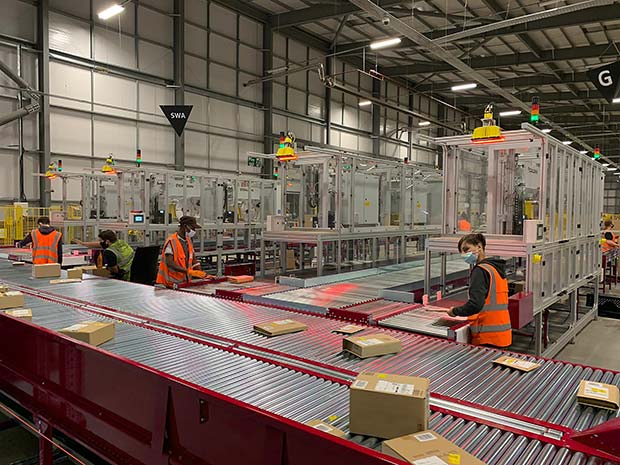For decades, your logistics team has been able to work ergonomically, using a red Caljan Telescopic Conveyor to offload and load parcels and packages. Then came e-commerce and the volume of parcels exploded.
 Amazon, E-bay and Etsy moved online around the turn of the century and other retailers slowly followed suit. Caljan customers were transitioning. Retailers were talking B2C logistics and parcel carriers were becoming third-party logistics partners, managing fulfilment processes for retailers. At Caljan, we realised that meeting delivery expectations would become a measure of success — not to mention an expensive, herculean task.
Amazon, E-bay and Etsy moved online around the turn of the century and other retailers slowly followed suit. Caljan customers were transitioning. Retailers were talking B2C logistics and parcel carriers were becoming third-party logistics partners, managing fulfilment processes for retailers. At Caljan, we realised that meeting delivery expectations would become a measure of success — not to mention an expensive, herculean task.
Caljan expanded, acquiring a company specialising in automatic solutions for individual labelling in 2008. Building on that experience, today we support every part of your goods in and despatch process. We design, develop and engineer an individual intralogistics solution that matches your specific challenge exactly.
As unemployment levels fall again in the UK, after a brief increase in 2019, the key to removing bottlenecks is to automate. The level of automation you need will depend on the goal you are trying to achieve. If all parts of an operation are automated, service costs, not to mention total cost of ownership, often lead to an unexpectedly long return on investment. The key to success is understanding which parts of the process it would be most cost-effective to automate.
You may want to increase efficiency in your inbound handling, e.g. when emptying containers. You may have space limitations. Or your challenge may be incorporating B2C processes in a facility designed primarily for B2B cargo handling.
Removing the bottleneck may mean printing ID labels and applying to goods as they are unloaded. You may want to print delivery notes, return labels and other consumer paperwork, inserting this automatically in the customer’s order as it speeds along the conveyor. Perhaps your focus is on sustainability, wrapping items in space-saving, environmental packaging before the carrier-specific label is printed and applied — and the parcel routed automatically to the appropriate terminal, depot or door.
As the UK economy bounces back from the effects of Covid and Brexit, parcel volumes will continue to grow. Developing more resilient, streamlined processes is essential, if your target is to prosper and not just survive.




Comments are closed.